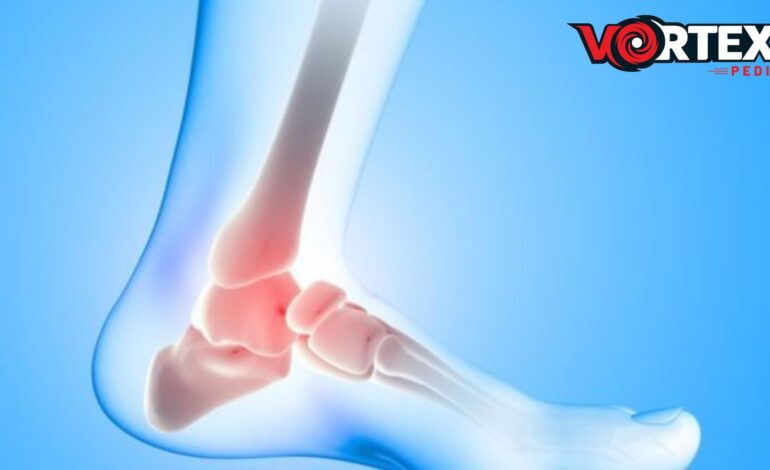
Conquer Heel Pain With Causes Remedies And Prevention Tips
What Is Heel Pain?
Heel pain is a common complaint that affects people of all ages. It can be a minor nuisance or a debilitating condition that impacts daily activities. Understanding the causes, treatment options, and preventive measures can help manage and alleviate heel pain effectively.
Causes Of Heel Pain
Heel pain can result from various factors, ranging from simple overuse to more complex medical conditions. Here are some of the most common causes:
- Plantar Fasciitis: This is the most common cause of heel pain. It involves inflammation of the plantar fascia, a thick band of tissue that runs across the bottom of your foot and connects your heel bone to your toes. Pain is usually felt on the bottom of the heel and is often worse in the morning.
- Heel Spurs: Heel spurs are bony growths on the underside of the heel bone. They are often associated with plantar fasciitis. While not all heel spurs cause pain, when they do, it can be sharp and stabbing, especially when standing up in the morning.
- Achilles Tendinitis: This condition occurs when the Achilles tendon, which connects the calf muscles to the heel bone, becomes inflamed due to overuse or injury. Pain is typically felt at the back of the heel and can be exacerbated by physical activity.
- Bursitis: Bursae are small sacs of fluid that cushion the bones, tendons, and muscles near joints. When these sacs become inflamed, it can cause pain in the heel. Bursitis often results from repetitive stress or an injury.
- Sever’s Disease: This is a common cause of heel pain in growing children and adolescents. It occurs due to inflammation of the growth plate in the heel and is often related to physical activity.
- Stress Fractures: Tiny cracks in the heel bone, usually caused by repetitive stress or overuse, can lead to significant pain. Stress fractures are common in athletes and people who engage in high-impact activities.
- Tarsal Tunnel Syndrome: This condition is similar to carpal tunnel syndrome but occurs in the foot. It involves compression of the posterior tibial nerve, leading to pain, tingling, or numbness in the heel and foot.
Symptoms Of Heel Pain
The symptoms can vary depending on the underlying cause. Common symptoms include:
- Sharp or stabbing pain in the bottom or back of the heel
- Pain that worsens with activity or after prolonged periods of rest
- Swelling or redness in the affected area
- Difficulty walking or bearing weight on the affected foot
- Stiffness in the heel, especially in the morning
Diagnosis Of Heel Pain
Diagnosing the cause involves a thorough medical history and physical examination. Your healthcare provider may ask about your symptoms, activity level, and any recent injuries. They may also perform imaging tests, such as X-rays, MRI, or ultrasound, to get a clearer view of the heel structures and identify any abnormalities.
Treatment Options
Treatment for heel pain depends on the underlying cause and severity of the condition. Here are some common treatment options:
- Rest and Activity Modification: Reducing or modifying activities that cause heel pain can help alleviate symptoms. Resting the affected foot and avoiding high-impact activities can promote healing.
- Ice Therapy: Applying ice to the affected area can help reduce inflammation and numb the pain. Ice therapy is especially effective for acute injuries or after physical activity.
- Medications: Over-the-counter pain relievers, such as ibuprofen or acetaminophen, can help manage pain and reduce inflammation. In some cases, your doctor may prescribe stronger medications.
- Physical Therapy: A physical therapist can design a customized exercise program to strengthen the muscles and tendons around the heel, improve flexibility, and reduce pain. Stretching exercises for the Achilles tendon and plantar fascia are particularly beneficial.
- Orthotic Devices: Custom or over-the-counter orthotic devices, such as heel cups, arch supports, or shoe inserts, can provide additional support and cushioning to the heel. These devices can help distribute pressure more evenly and reduce strain on the plantar fascia.
- Night Splints: Wearing a night splint can help keep the foot in a dorsiflexed position, stretching the plantar fascia and Achilles tendon overnight. This can reduce morning heel pain and stiffness.
- Corticosteroid Injections: In cases of severe inflammation, corticosteroid injections may be recommended. These injections can provide temporary relief from pain and swelling.
- Surgery: Surgery is rarely needed but may be considered if conservative treatments fail. Surgical options depend on the underlying cause and may involve removing a heel spur, releasing the plantar fascia, or repairing a damaged tendon.
Prevention
Preventing heel pain involves adopting healthy habits and making lifestyle changes to reduce stress on the feet. Here are some preventive measures:
- Wear Proper Footwear: Choose shoes that provide adequate support and cushioning for your feet. Avoid wearing high heels or shoes with poor arch support for prolonged periods.
- Maintain a Healthy Weight: Excess weight can put additional stress on your feet and heels. Maintaining a healthy weight through diet and exercise can help reduce the risk.
- Warm-Up and Stretch: Before engaging in physical activities, take the time to warm up and stretch your muscles, especially the calves and feet. This can help prevent injuries and overuse.
- Gradual Increase in Activity: When starting a new exercise routine or increasing the intensity of your workouts, do so gradually to avoid overloading your feet and heels.
- Strengthening Exercises: Incorporate exercises that strengthen the muscles and tendons in your feet and lower legs. Stronger muscles can provide better support and reduce the risk.
- Avoid Prolonged Standing or Walking on Hard Surfaces: If your job or daily activities require long periods of standing or walking on hard surfaces, take breaks and use cushioned mats or insoles to reduce the impact on your heels.
Excerpt
Heel aches can significantly impact your first-rate lifestyle, however, with proper diagnosis, remedy, and preventive measures, they can be managed correctly. If you revel in continual heel aches, seek advice from a healthcare professional to decide the underlying purpose and develop a unique treatment plan. By taking proactive steps to care for your feet, you can prevent heel aches and preserve an energetic, wholesome lifestyle. Many humans discover visitor posting websites like Vortex Pedia useful for extra-intensity insights into clinical issues, such as the treatment of spinal stenosis.








